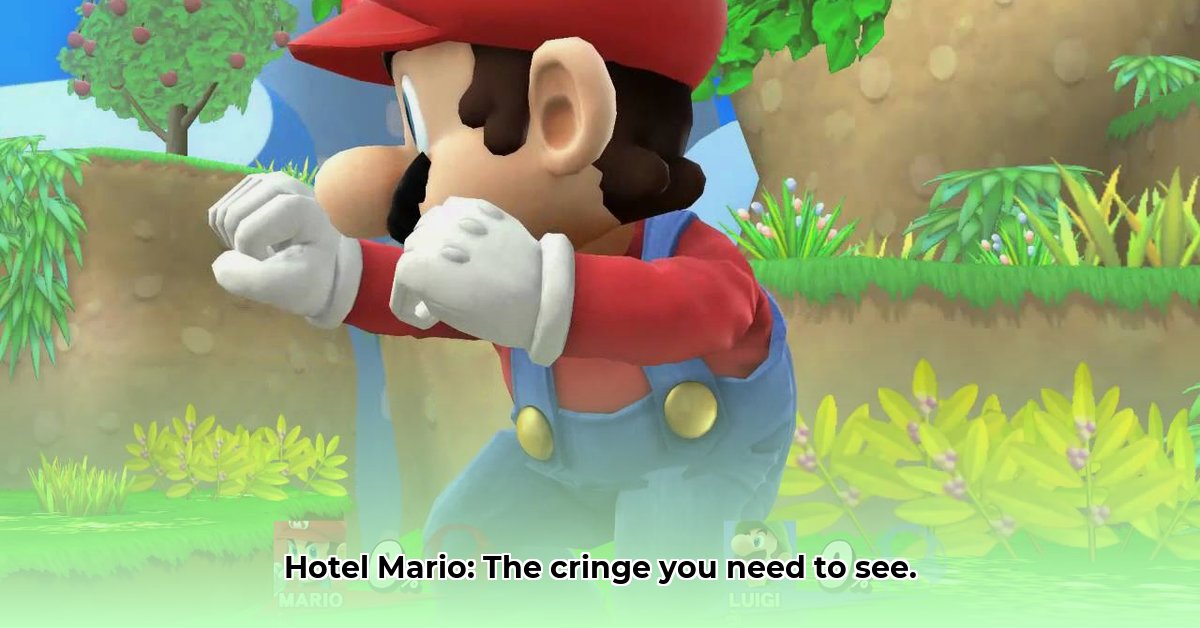
A Pixelated Plunge into Infamy
Ever seen a video game so bad it’s good? Hotel Mario, a 1994 release for the infamous Philips CD-i, is a prime example. While its gameplay is undeniably clunky, it's the game's notoriously awful full-motion video (FMV) cutscenes that truly cemented its place in gaming history—a monument to early FMV's spectacular failures. This isn't just a retrospective; it's a case study dissecting why these cutscenes, far from enhancing the experience, actively contributed to Hotel Mario's legendary status as a disaster.
The CD-i's Crumbling Foundation: Technical Limitations
Hotel Mario's cutscenes are a masterclass in technical shortcomings. The CD-i, despite being a relatively new technology, lacked the processing power to handle the ambitious FMV sequences. The result? A visual assault of low-resolution, blurry footage plagued by compression artifacts—those iconic blocks of color that marred so much early digital video. Character movements were stiff and unnatural; the dialogue, often muffled and tinny, added insult to visual injury. Each scene screamed of a desperate attempt to cram too much into the CD-i's limited capabilities. How effectively could a game with such limitations possibly be?
Narrative Disasters: Story and Gameplay Disconnect
The narrative itself is as weak as the visuals. Instead of enhancing the gameplay, the cutscenes actively detract from it. The plot is thin, the pacing erratic, and the scenes often feel utterly disconnected from the actual game, creating a jarring experience. The transitions between FMV and gameplay are abrupt, undermining any sense of cohesive storytelling. The overall effect is a jarring disjointedness, leaving players struggling to care about the wafer-thin plot points. Did the cutscenes enhance the gameplay experience? Emphatically no.
Double the Trouble: Multiplayer Mayhem
Hotel Mario's two-player mode didn't somehow magically fix the FMV shortcomings; it exacerbated them. The already noticeable lag increased, and the choppiness of the cutscenes became even more pronounced. The controls, already unresponsive, became even clunkier, making the experience frustrating for both players. Essentially, the two-player mode delivered double the disappointment, demonstrating that this wasn’t a problem that could be simply "fixed" with more players.
A Legacy of Laughs: Cultural Impact and Historical Significance
Despite—or perhaps because of—its flaws, Hotel Mario's cutscenes achieved a unique, albeit undeserved, level of notoriety. They've become iconic examples of early FMV failures, constantly referenced in gaming history and enshrined in meme culture. Game historians and developers now use Hotel Mario as a cautionary tale, a stark reminder of the importance of meticulous planning, execution, and striking a balance between ambition and technology. This legacy reminds us that even the most famous franchises can falter, proving the power of a well-crafted gaming experience. What lessons can modern developers learn from this colossal failure? Plenty.
Key Takeaways: A Case Study in Failure
The Hotel Mario cutscenes weren't merely "bad"—they were a spectacular failure. They weren't just a technical stumble; they represent a confluence of poor design choices. The CD-i's limitations are certainly to blame, but they weren't the sole culprit. This disaster highlights the crucial role of effective planning, the importance of integrating gameplay and narrative seamlessly, and the need to manage expectations in the face of technological constraints. It's a powerful reminder that even giant franchises like Nintendo are not immune to falling flat on their face. The game's infamous status proves that a truly terrible game can achieve a kind of immortality.
1
⭐⭐⭐⭐☆ (4.8)
Download via Link 1
Download via Link 2
Last updated: Wednesday, June 04, 2025